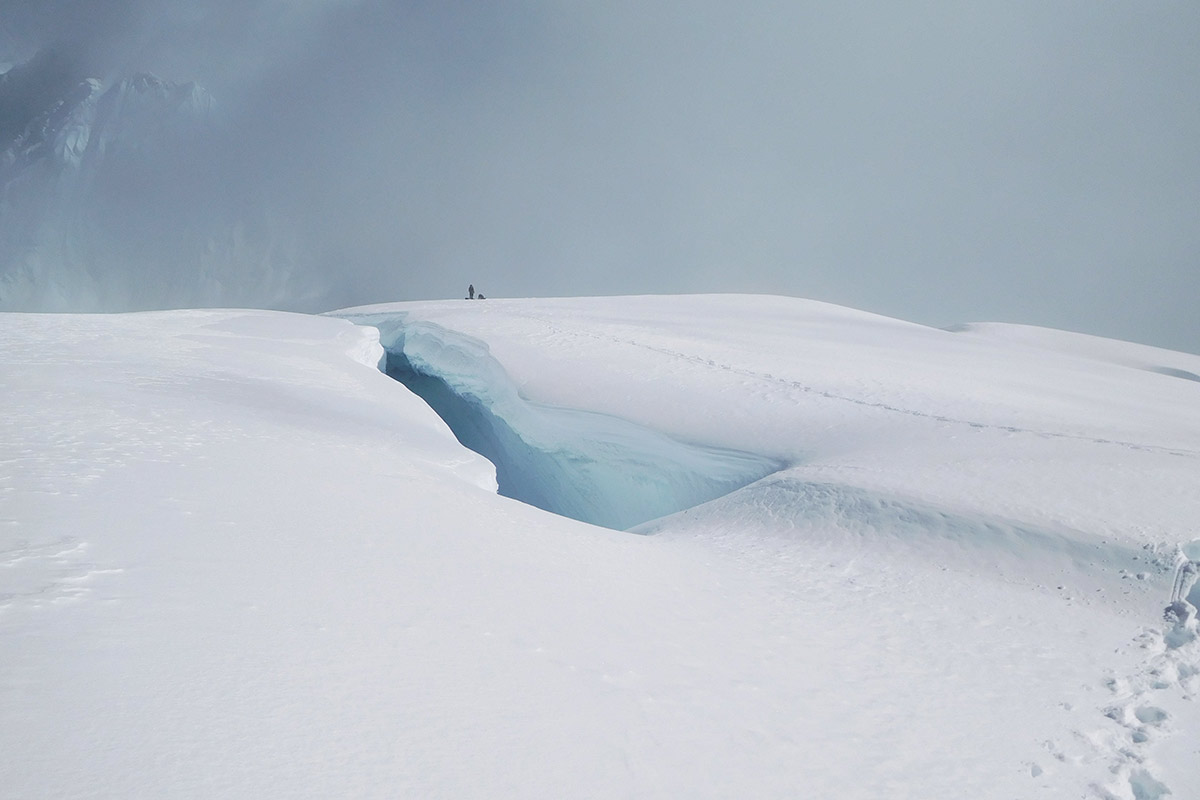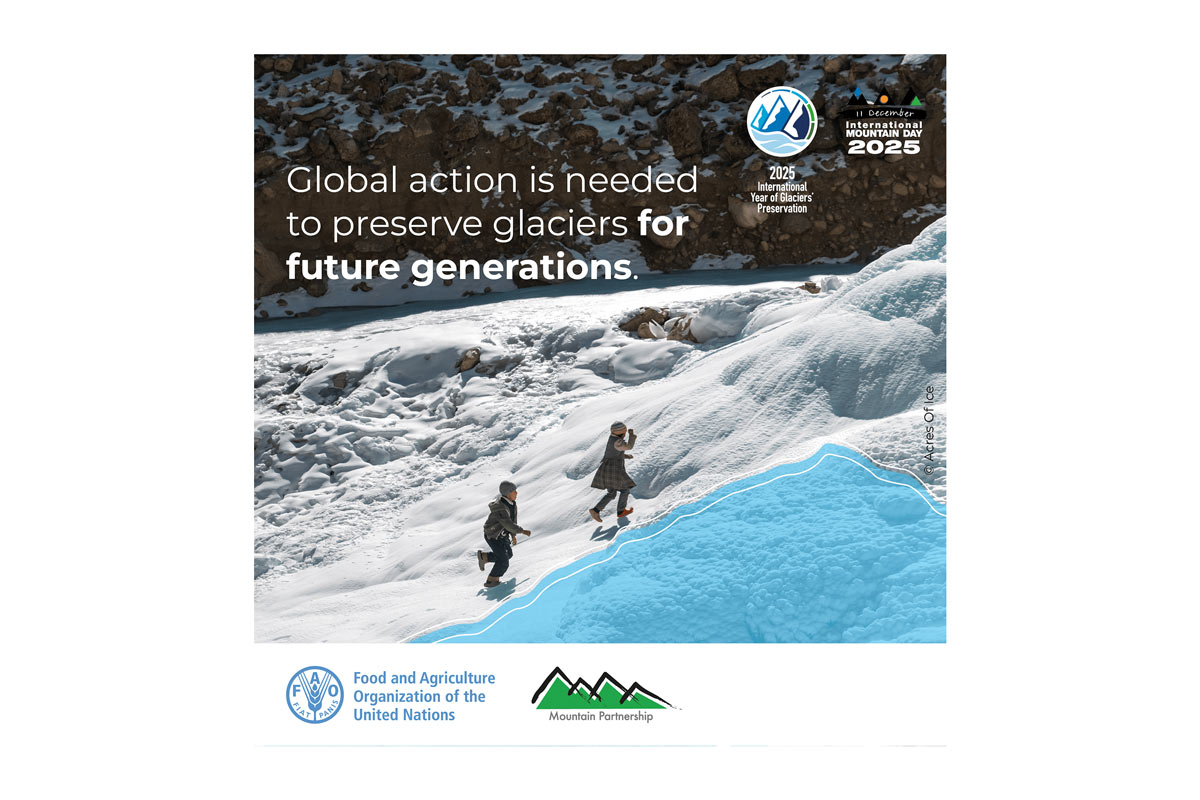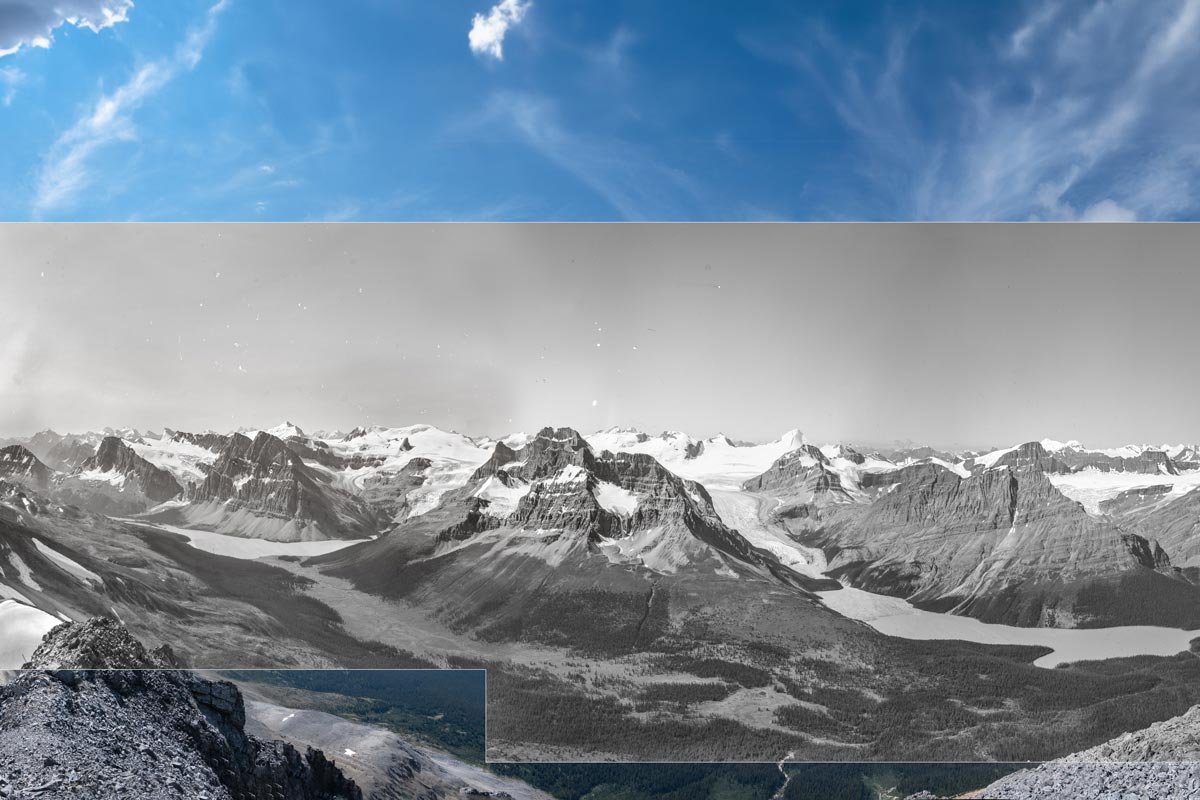This latest article from the UIAA Alpine Summer Skills series focuses on extricating yourself from a crevasse.
Precautions:
- Plan for self-rescue before a fall: “If I fall, brace yourselves as much as possible, install an anchor and keep the rope tight. I will climb back out.”
- Make sure the climbers up on the surface have braced themselves properly. Wait until they’ve installed an anchor before you ascend the rope.
Required equipment:
- Two ascending devices
- It’s much easier to use mechanical ascenders than friction (Prusik) hitches.
- Spare rope reserved in the backpack.
The Steps:
1 – Attach an ascending device or friction hitch to the rope and clip it to your belay loop with a locking carabiner. Undo your shoulder coils. The load is now borne by the ascender/hitch at hip level.
 2 – Remove your backpack and clip it to the rope: the added weight will aid in your ascent by keeping the rope taut.
2 – Remove your backpack and clip it to the rope: the added weight will aid in your ascent by keeping the rope taut.
 3 – Place a second mechanical ascender (examples: Ropeman, Tibloc, handled ascender etc.) on the rope, above the ascending device/hitch already clipped to your harness. Clip a long sling to this upper ascender, to use as a foot loop. During the ascent, ensure that both ascending devices are connected to your belay loop.
3 – Place a second mechanical ascender (examples: Ropeman, Tibloc, handled ascender etc.) on the rope, above the ascending device/hitch already clipped to your harness. Clip a long sling to this upper ascender, to use as a foot loop. During the ascent, ensure that both ascending devices are connected to your belay loop.
4 – To ascend, first move up the foot-loop ascender, and then stand in the foot loop while moving the harness ascender up.
This extract comes from the Alpinism section of the UIAA Alpine: Summer Skills Handbook and a dedicated chapter on crevasse rescue.
Technical drawings courtesy of: CNISAG
Previous extracts from the UIAA Alpine Summer Skills Guide can be found on our dedicated Skills page.
To purchase a digital copy of guide in English click here.
About the UIAA Alpine Skills Summer Guide
 The UIAA Alpine Skills Summer guide was first published in 2015. Produced in collaboration with the Petzl Foundation, the guide and has been well received worldwide and is currently available in five languages. To mark the launch of a digital version of the publication, the UIAA is running a series of articles from the guide designed to help hikers, climbers and mountaineers develop their skills and knowledge of the mountain environment.
The UIAA Alpine Skills Summer guide was first published in 2015. Produced in collaboration with the Petzl Foundation, the guide and has been well received worldwide and is currently available in five languages. To mark the launch of a digital version of the publication, the UIAA is running a series of articles from the guide designed to help hikers, climbers and mountaineers develop their skills and knowledge of the mountain environment.
The guide was developed specifically as a reference document for trip leaders and instructors of club and federations within the UIAA – an aide memoire for climbers and mountaineers who attend training courses delivered by instructors and guides who have gained qualifications accredited by the UIAA. Now open to the wider climbing and mountaineering world, the handbook’s four modules focus primarily on summer activities. However, a specific winter guide is currently in production.





